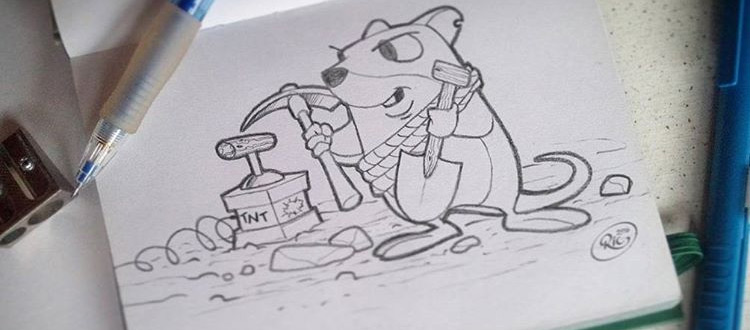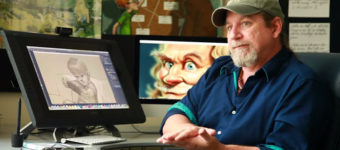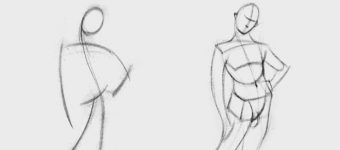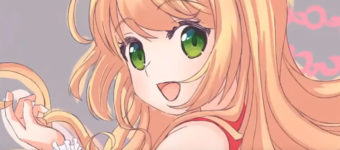
Top 10 Best Drawing Books For Absolute Beginners
When you’re just getting started drawing it can be incredibly frustrating to draw poorly every day. It’s crucial to get as much practice as you can early on. But the wrong kind of practice is both annoying and a hinderance to your progress.
So if you’re a complete novice how do you get started drawing properly?
I always recommend the Proko figure series but not everyone wants to follow video courses. Instead I’d recommend starting with books that cover the raw fundamentals of drawing and measuring to draw accurately from life.
All of the books in this post will radically improve your knowledge and technical skillset to help you become a better draftsman and artist.
Keys to Drawing


This is one of the most recommended books for beginners and I’m happily apart of that bandwagon. Keys to Drawing teaches you how to draw what you see using measurements and proper marksmanship.
I cannot think of too many other books that guide you along in the same way as this book. The author Bert Dodson first published Keys to Drawing well over two decades ago but it’s still relevant to this day.
You’ll learn about controlling your elbow and shoulder motion to make the most accurate lines on the paper. This goes hand-in-hand with measuring and seeing things accurately to draw them from life.
If you want to become a professional artist then you need to draw from life.
The difficult part is understanding what “drawing from life” means and how to get started. Keys to Drawing will make this topic much less difficult and a bit smoother for anyone with little-to-no experience.
Drawing for the Absolute Beginner


Here’s another title that helps the reader learn to draw starting from step one. You’ll learn which materials to start with, how to hold your pencil, and how to accurately make marks on your paper.
As you learn to see and measure you’ll grow more comfortable with your marksmanship. Drawing for the Absolute Beginner helps you build this confidence and pushes you to study the fundamentals like form, lighting, perspective, and other related properties.
In total the book covers 128 pages which seems very short. But inside you get 24 unique demos which cover a broad range of sketching, measuring, constructing and rendering objects.
You’ll start with basic objects like chairs and cups but quickly move onto more detailed items like trees and vehicles.
This is the perfect book for anyone with no prior experience who genuinely wants to be good at drawing. But remember this book can only take you so far. It’s up to you to actually practice and follow the lessons to see improvements.
Drawing on the Right Side of the Brain


Many people recommend Betty Edwards’ Drawing on the Right Side of the Brain as the perfect beginner’s book. It has a lot of practical exercises that build on previous ideas in the book until you learn to see perspective, negative space, and values.
I personally did not get much from this book. I think the text is great and the lessons do mean well. But I just could not understand exactly what Betty was trying to teach or how it was supposed to improve my performance.
Once I moved over to a couple other books things started to click, and that’s when Betty’s book made a lot more sense to me.
But many novice artists swear by this title and would highly recommend it to complete beginners.
I think this book will be great for self-motivated artists who know why they want to draw and what they’re trying to do. If you’re completely new to art and seriously have no idea how to even comprehend drawing them I’d recommend a softer intro like Keys to Drawing.
However both are incredible books so you really can’t go wrong either way.
Drawing for the Absolute and Utter Beginner


Still life drawings are perfect for beginners because objects don’t move like the human figure. This is the purpose of Drawing for the Absolute and Utter Beginner. It aims to help anyone learn to draw from life with accuracy.
You’ll start with constructing the outside contours of objects and quickly move to constructing shapes and volumes. This is a crucial part of learning to draw and the exercises in this book teach you how to execute properly.
Plus before each exercise you’ll get a brief description of what you’re trying to learn and why it’s important. This is very helpful to new artists who simply don’t know why they’re doing these exercises.
You will probably need to re-read these passages a few times for them to really sink in but the lessons are invaluable to new artists.
The author Claire Watson Garcia is a teacher and many of these lessons are applied to her real life courses. Her teaching style is very approachable for children and adults so this book is a great start to real still life drawing.
Perspective Made Easy


One of the main fundamental art skills you have to learn is perspective. This creates the illusion of depth in a 2D drawing in the same way you’d find this in a photograph.
There are dozens of perspective books and the reason I like Perspective Made Easy is, well, the title says it all.
This book makes the concept of perspective super easy to understand. You’ll learn about horizon lines, vanishing points, and nitpicky tricks to help you construct buildings and objects in perspective based on any scene.
The author Ernest Norling repeats important points using different exercises to drive these concepts into your brain.
By the end you should have a powerful understanding of perspective and how it’s applied to every piece of art you create.
This book alone will not make you a master at perspective. But it’ll give you a big push into the deep end of the pool with some floaties to keep you above water as you get deeper into this subject.
Light for Visual Artists


Another fundamental skill of drawing is rendering light and shadow. This can be grouped together and labeled as value but learning to render value inherently means understanding how light works.
The book Light for Visual Artists is perhaps the best intro guide to understanding the physics and the artistic techniques for light and shadow. The author covers different materials and how they reflect light, plus the concepts of multiple light sources and how these affect objects in a scene.
If you’re starting with drawing first you’ll have an easier time with the basics of lighting & shadows. When you get to painting you’ll deal with colors that make the topic a whole lot more complicated.
Thankfully this book also talks about color selection so it really can be your ultimate reference guide for lighting. I’d highly recommend this to anyone serious about art because it should answer most(if not all) of your questions about values.
Vilppu Drawing Manual


Not many people talk about the Vilppu Drawing Manual because it’s published privately by Glenn Vilppu and his estate. But this is one of the most helpful guides I’ve ever bought on the subject of life drawing and figure drawing.
Vilppu has been teaching art for decades and he has a very unique style of teaching. This spiral-bound guide covers a lot of topics from basic forms to measuring and constructing objects accurately from life.
I covered this in a previous post explaining the difference between realist and constructionist drawing. Vilppu works closely with animators and concept artists so he understands the need to learn both techniques.
Gesture drawing and form construction are the two primary concepts you’ll study in this book. Some people prefer Loomis for these topics, but with Loomis you’ll end up grabbing 2-3 different books just to cover the material in this one spiral-bound guide to life drawing.
I do not think every artist will need a copy of this book. However it’s definitely great for complete beginners or even semi-experienced beginners who want to study a different approach to life drawing.
The Natural Way to Draw: A Working Plan for Art Study


This book is like a full art course crammed into print form. The author expects a lot from the reader and if you grab this book you should plan to draw for at least 4 hours a day every day.
The Natural Way to Draw: A Working Plan for Art Study teaches you how to draw figures and objects from life with a quick sketch/animator’s attitude. The author forces you to see beyond the 2D paper to draw the forms as if they’re right in front of you. But it also forces you to make marks quickly with less concern on line quality.
If you’re a complete beginner this book will be hard. If you’re looking to render realistically I would absolutely avoid this book. It’s also not great for someone who already has figure drawing experience.
But if you’re an aspiring animator this book will teach you how to capture figure poses quickly with weight and style. It will not help you draw accurately from life. But it will help you see what you’re drawing beyond simple contours.
Figure Drawing for All It’s Worth


We finally get to the one and only Loomis book that I’ll drop in this post. Yes there are many incredible books from Andrew Loomis, and yes I would personally recommend most of them.
But Figure Drawing for All It’s Worth is the one book that can make the biggest impact on a beginner’s mindset. Learning to draw the figure is arduous and honestly annoying at first. It can be stressful to understand what you’re even trying to do, let alone how to do it.
Loomis breaks down the process in this book teaching you how to see the figure, how to construct it, and finally how you should apply these techniques in the figure room.
You can find so much more info about this title online because this is one of the most highly recommended books for learning figure drawing.
It’s a great choice for new artists but only if you’re getting serious about figure drawing. If you’re only drawing chairs or park benches then I’d recommend a simpler “learning to see” art book such as Keys to Drawing or Drawing on the Right Side of the Brain.
How to Draw What You See


Lastly we get to an older book that was first published in the early 1970s. It has since been reprinted and amended with more info and more up-to-date writing.
How to Draw What You See is one of the top books to help you see objects properly and capture them accurately. It spans just over 170 pages and the writing is exceptionally detailed. You’ll learn about forms, shading, and perspective through a series of realistic drawing exercises.
I’d define this book to be helpful but incredibly simple. It’s really made for novice artists who have never drawn from life and have no idea where to start. The reason it’s so low on my list is that it doesn’t just cover drawing, but also gets into charcoal and watercolor too. This isn’t necessarily bad but it’s not great for beginners.
If you just want to master drawing then you will not want any other mixed media. This book covers drawing for the first 18-20 chapters then quickly switches mediums.
If you want a singular book on drawing then I’d instead recommend the first 2-3 books at the top of this list.
However I wouldn’t say this book is bad or incorrect in how it teaches drawing. Just that it goes far beyond mere drawing, and this can be off-putting to some artists who just want to master a pencil.
Everyone dives into drawing from different stages and it’s tough to recommend one single book for every person. But the titles in this list are all fantastic, some covering more specific topics while others are more broad and generic.
But either way I guarantee there’s something in this list to help you improve.
Whether you’re looking to become an animator, concept artist, illustrator, comic artist, or even a fine artist, these books will get you started and teach you the right way to see and draw accurately.












